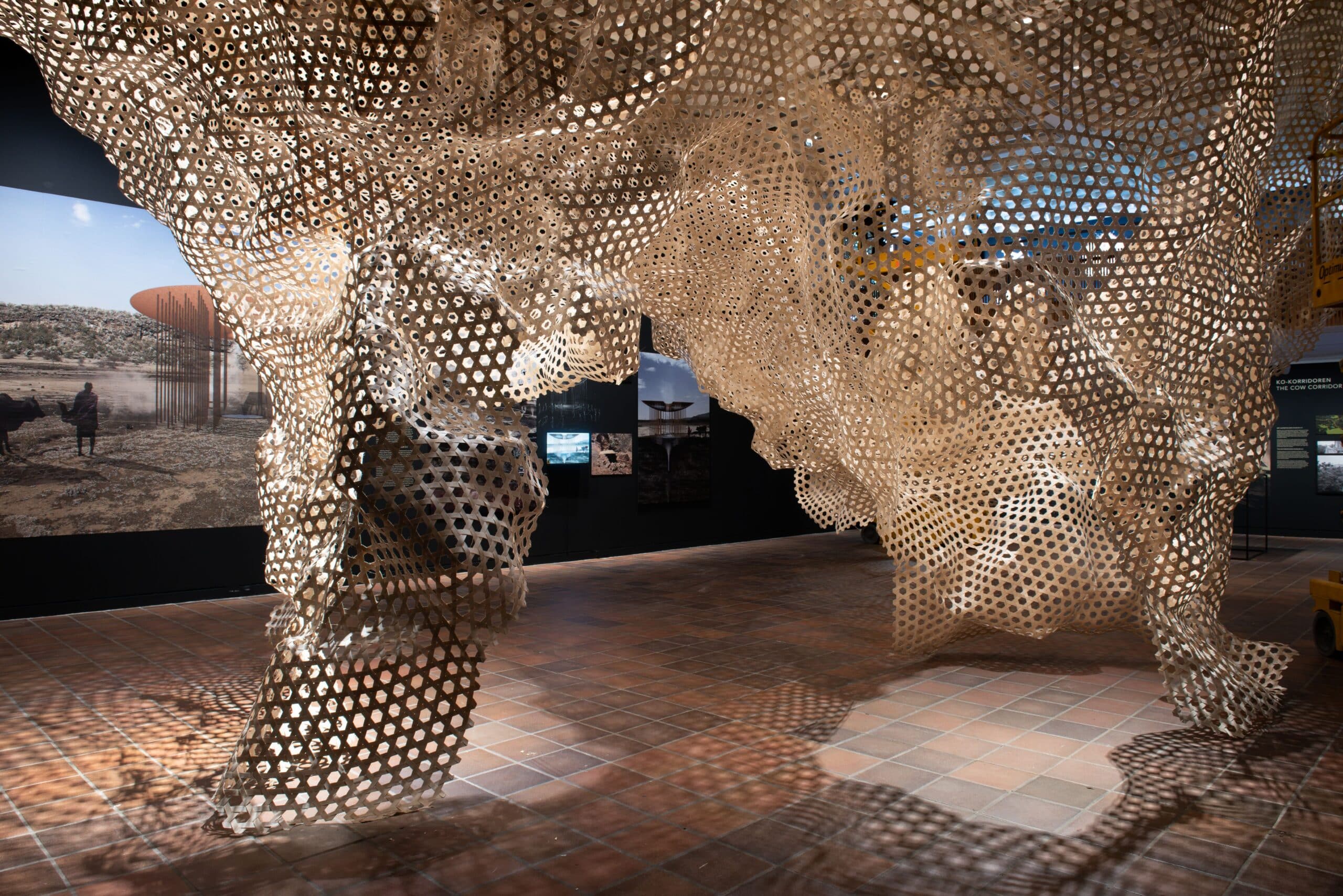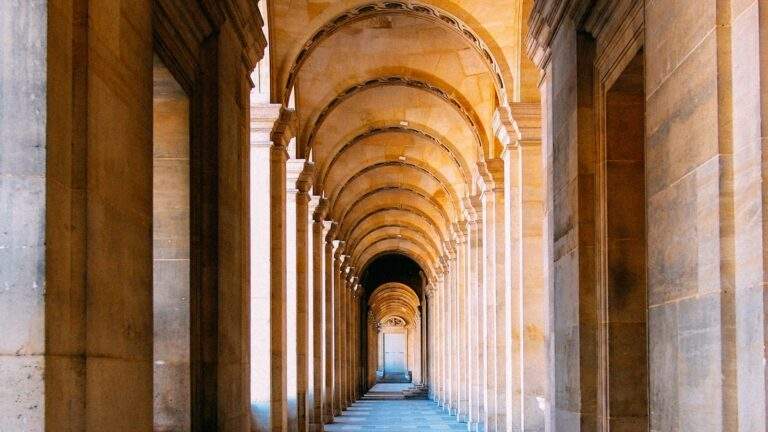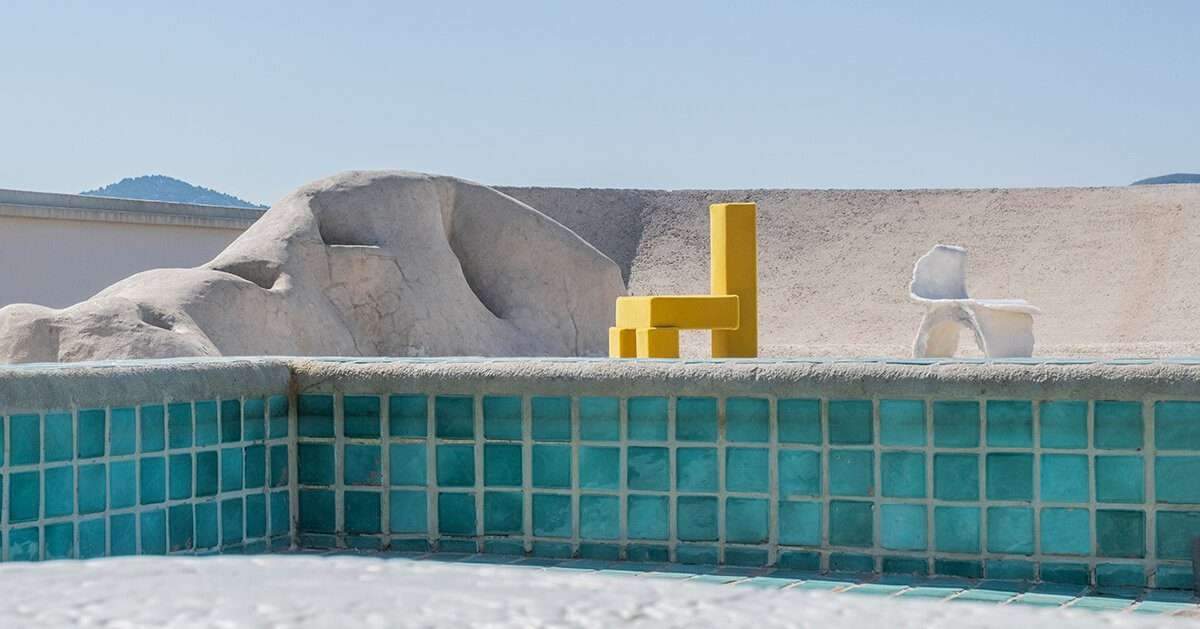Understanding Post-Colonialism Through Architecture and Nature
Kaiv Byoro is an architectural and research studio based in Nairobi. The studio focuses on post-colonial conditions in Africa, emphasizing the integration of nature and landscapes within architectural practice.
The Studio and Its Integrative Vision
Founded in 2014, Kaiv Byoro blends anthropology and geology into its approach. These disciplines are not only analytical tools but also the foundation of the studio’s practice. They help uncover the cultural and historical roots of architecture while shaping its future direction.
Inspired by the Cradle of Humankind
The studio draws inspiration from the Cradle of Humankind in South Africa. This UNESCO World Heritage site, famous for its limestone caves, played a key role in shaping theories of human evolution. It continues to inspire Kaiv Byoro, symbolizing a practice deeply rooted in the earth and nature.
History and Environment: A Deep Connection
For Kabaji Karanja, the studio’s founder, this vision is deeply personal. He recalls, “Since I was twelve, I have memories of sleeping in caves. Strangely, this cave has become a major site in our research. In the Anthropocene 10 project, the path returned to its origin.”
A New Vision for the Future
Karanja’s experience reflects a core principle of Kaiv Byoro: the interconnectedness between humans and place. The studio’s work is not limited to understanding the past; it also imagines a future that blends historical insights with contemporary environmental concerns.
Architecture as an Ongoing Dialogue with the Earth
Kaiv Byoro emphasizes that architecture is not merely about constructing spaces. It is a continuous dialogue with the earth and history. The studio strives to deepen our understanding of the relationship between architecture, place, and nature, seeking to inspire change in how architecture interacts with the environment.
Kaiv Byoro Studio: Reimagining Architecture and Culture
Kaiv Byoro Studio is a collective of Kenyan architects and researchers based in Nairobi. Their work explores post-colonial African conditions through a lens that redefines the role of nature and landscapes in architecture. By combining anthropology with geology, the studio treats these fields as core foundations that shape both the direction and future of its practice.
“Obsidian Rain”: Reflecting African Roots
One of their key projects, Obsidian Rain, was presented at the 17th Venice Architecture Biennale in 2021. This life-sized installation recreated the atmosphere of Mau Mau hideout caves in Kenya. It featured 1,680 suspended obsidian stones, each symbolizing a part of Kaiv Byoro’s broader initiative: The Anthropocene Museum.
The Anthropocene Museum: Challenging Western Concepts
The Anthropocene Museum is more than an exhibit. It is a dynamic, evolving institution rooted in imagination and community. It began on ancestral land in East Africa and aims to rethink the museum’s role in the Anthropocene era. Instead of being limited to a building, it exists as an ongoing, living experience that transcends borders and time.
The studio questions the traditional concept of museums, especially within the African context. Historically, African cultures transmitted knowledge orally. Their traditions connected deeply with nature and included practices like poetry, storytelling, and dance. As Stella Mutegi, the studio’s co-founder, notes:
“The traditional museum, as a place where objects are stored for interaction, is a post-Enlightenment Western idea. We’re reimagining this in the Anthropocene Museum, using sensory media and encouraging movement across global spaces.”
Learning from the Pandemic: Landscapes as Culture
During the COVID-19 pandemic in 2020, many cultural venues shut down. As a result, green spaces became the primary public gathering areas. This shift led Kaiv Byoro to promote the idea that landscapes can act as cultural expressions. According to the studio, the environment does not only shape society’s culture—it also opens new paths for architecture to influence identity and enhance our interaction with nature.

Reimagining Geography and Place: From the Past to the Future
Kaiv Byoro’s research reveals that site and geography are not merely historical reference points; they can also serve as platforms for envisioning future alternatives. In this context, the studio rethinks the relationship between place and cultural identity, considering it as a foundation for reimagining what lies ahead. The studio highlights that these ideas were present in the history of the Mau Mau freedom fighters, who, in their resistance, sought to envision a better African state. Today, Kaiv Byoro uses the specificity of place as a starting point to create a future that bridges the past and rebuilds the relationship with nature and the environment.
Geology as a Contested Field: Conflicts and Climate Change
The studio underscores the importance of geology and land as contested resources. Stella Mutegi, co-founder of the studio, explains:
“Much of what is happening today – from conflicts and climate change to natural disasters – can be traced back to geology and human interaction with the land. Climate change is deeply connected to resource extraction from the earth and the conflicts that arise from plundering material resources.”
Mutegi also stresses that resource extraction extends beyond natural resources to encompass human resources, reflecting the social and political dimensions embedded within these practices.
Exploring Geology at the 2025 Venice Biennale: “British Reform Geology”
At the 2025 Venice Architecture Biennale, Kaiv Byoro will explore geology in a broader context, using architecture to engage with the destructive impacts of colonial systems. The exhibition, titled “British Reform Geology,” will address how geological resources have been extracted from the land and their effects on communities. The topic will be presented through emerging architectural practices aimed at reform, critically examining the systems that fueled colonialism and the extraction of resources from African lands.
The exhibition will feature the British Pavilion, led by a multidisciplinary team under the direction of curator Owen Hopkins and academic Catherine Yusoff. The focus will be on the Great Rift Valley as a geological entity, stretching from southern Turkey through Palestine to Ethiopia, Kenya, and Mozambique. The exhibition will delve into the geographical, geological, and anthropological dimensions of the topic.

The Partnership Between Britain and Kenya: Stimulating Thought on the Legacy of Colonialism
Focusing on the partnership between Britain and Kenya, this year’s British Pavilion exhibition aims to provoke critical thought on the role of architecture in addressing the geological impacts of colonialism. The exhibition seeks to present ideas for healing and reform by showcasing land practices that rebuild connections between people and the environment. This theme is closely tied to exploratory practices grounded in a deep understanding of historical and geological realities.
Exploring Land Practices: From the Rift Valley to Global Impact
For Kaiv Byoro, land practices are a crucial component of any decolonial exploration. In projects such as the Rift Valley in Mount Suswa, which holds traditional significance for the Maasai people, the studio highlights the small-scale extraction of resources and its effects on local communities and natural resources. These projects not only examine water collection in the region but also prompt us to think holistically about current ecosystems, including plants and animals.
In this context, Mutegi emphasizes:
“For us, land practices start with the community, but if expanded, they can have a planetary impact. This is the argument – geological awareness. The small practices are the most vulnerable. If we protect the small practices, we will have a chance to dismantle the large-scale ones.”
Reimagining the British Pavilion: Rethinking Empire
The building that will house the British Pavilion is not exempt from this context. Karanja describes it as a “manifestation of empire,” adding:
“With the entire Giardini complex being an expression of European superiority, there is a desire to deconstruct this history and examine how the colonial project led to massive climatic impacts.”
The building will be transformed to become the focal point of a broader conversation on the physical and geological manifestations of colonial activity. This alteration aims to draw attention to what has long been overlooked, creating space for a discussion about the long-term impacts of colonial systems on the environment and geology.




